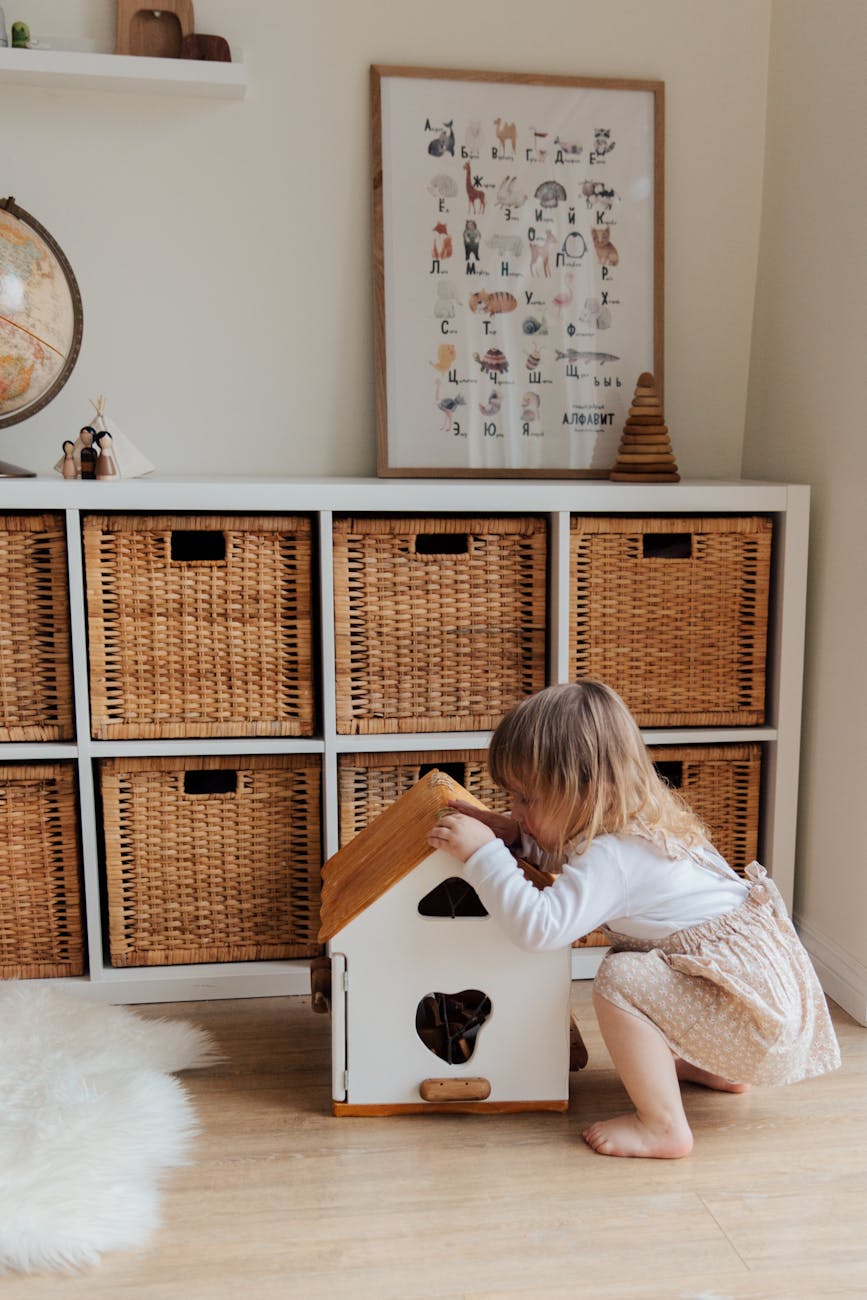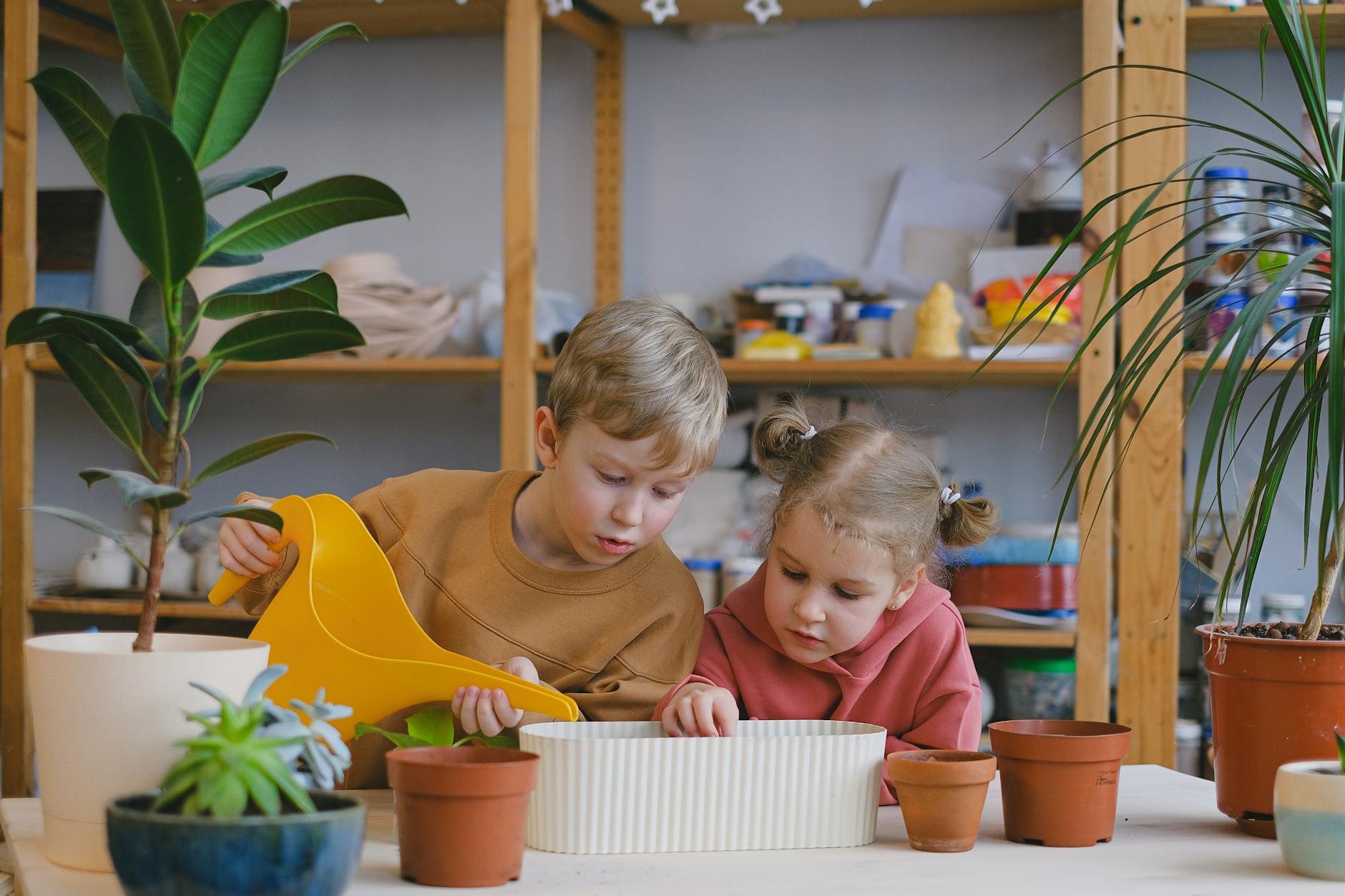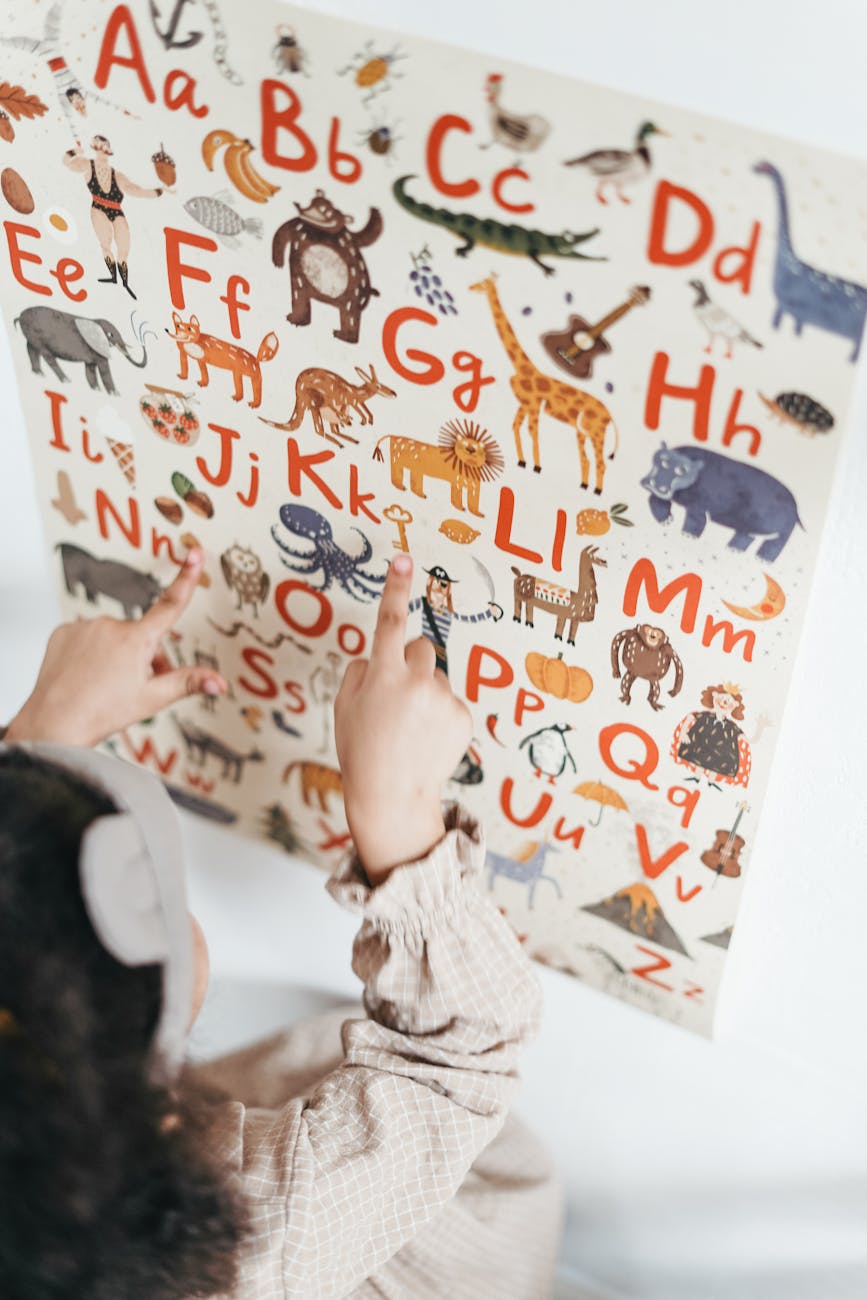Introduction
In the journey of parenting, one of the most valuable gifts you can give your child is the foundation of a growth mindset. This concept, popularized by psychologist Carol Dweck, emphasizes the belief that abilities and intelligence can be developed through dedication and hard work. For toddlers, who are at a critical stage of development, instilling a growth mindset can set the stage for lifelong learning, resilience, and success. Helping kids develop a growth mindset enables them to face challenges, learn from mistakes, and ultimately achieve more success in school and life. This blog post explores practical strategies for fostering a growth mindset in toddlers, turning everyday challenges and activities into opportunities for growth.
As a child psychiatric nurse practitioner and a mom of two, I understand the importance of nurturing young minds. My professional and personal experiences have shown me that the early years are crucial for setting the stage for future success. Fostering a growth mindset from a young age can lead to higher academic performance, confidence, resilience, and overall success in life. By cultivating a growth mindset in my children, I’ve witnessed firsthand the positive impact it has on their confidence and eagerness to learn.

Understanding the Growth Mindset
Before we dive into strategies, let’s clarify what a growth mindset entails. Coined by educational psychologist Carol Dweck, the term growth mindset is the belief that skills and intelligence can be developed over time through effort, learning, and persistence. This mindset contrasts with a fixed mindset, where individuals believe their abilities are static and unchangeable. A growth mindset encourages perseverance, resilience, and a love of learning, while discouraging fixed mindsets and promoting alternative, growth mindset-oriented language.
Why is this important for toddlers? At this age, children are forming their beliefs about themselves and their abilities. Encouraging a growth mindset helps them view challenges as opportunities to learn and grow rather than obstacles that are insurmountable.
A growth mindset is particularly powerful during early childhood development because toddlers are naturally curious and eager to explore. By reinforcing the idea that their efforts can lead to improvement, we can help them build a strong foundation for lifelong learning.
Strategies to Foster a Growth Mindset in Early Childhood
Praise Effort Over Outcome
When it comes to encouragement, focus on the effort your child puts into tasks rather than the outcome. Praise like “You worked so hard on that puzzle!” highlights the importance of perseverance and effort. This approach teaches toddlers that their actions and dedication can lead to improvement and success.
As a child psych nurse practitioner and mom of two, I’ve seen firsthand how praising effort rather than innate ability boosts my children’s confidence. For instance, my oldest child struggled with learning to dress himself. Instead of saying, “You’re so big!,” I said, “I saw you practicing every day and not giving up. Great job on keeping at it!” The sense of accomplishment on his face when he finally managed to get dressed on his own was a proud moment for both of us.
Encourage Curiosity and Exploration
Toddlers are naturally curious. Encourage this curiosity by providing opportunities for exploration and discovery, helping kids cultivate a growth mindset. Ask open-ended questions like “What do you think will happen if…?” and “I wonder about…” to stimulate thinking and problem-solving. This not only fosters a love for learning but also reinforces the idea that asking questions and exploring are key components of growth.
My older child loves asking questions about everything, from how plants grow to why the sky is blue. We’ve made it a habit to explore these questions together, whether it’s through books or simple experiments at home. This not only satisfies his curiosity but also shows him that learning is a continuous, enjoyable process.

Model a Growth Mindset
Children learn a lot from observing the adults in their lives. Demonstrate a growth mindset by sharing your own learning experiences, especially how you overcome challenges. Positive self talk can help replace negative thoughts with affirmations and encouragement. Maintaining a positive attitude during the learning process is crucial, particularly when trying new or challenging things in front of children. Use language that reflects growth and learning, such as “I haven’t mastered this yet, but I’m improving every day.” This shows your toddler that everyone, regardless of age, can learn and grow.
For example, I recently took up crocheting as a new hobby. My first few attempts were not as good as I had hoped, and I shared my frustration with my kids. I told them, “I didn’t make this as well as I wanted to, but that’s okay because I’m learning. Each time I practice, I get a little better.” Seeing me persist and gradually improve helped them understand that learning is a process and that effort is more important than immediate perfection.
Use Growth Mindset Language
The language we use can significantly impact how children see themselves and their abilities. It is crucial to transition from fixed mindset phrases to growth mindset phrases to foster a more positive and resilient outlook. Instead of saying “You’re so smart,” try phrases that focus on the process, like “You found a creative way to solve that problem!” This type of language reinforces the idea that effort and strategies lead to success. Remind students of past challenges they have overcome to encourage a growth mindset.
Using growth mindset language has made a big difference in how my kids handle challenges. For example, when my daughter was having a hard time with her stacking cups , I said, “You haven’t got it yet, but you’re getting closer each time you try.” This simple change in how I talked to her helped her stay positive and keep going, even when things were tough.
Provide Challenges and Encourage Problem-Solving
Offer tasks that are slightly beyond your toddler’s current abilities to encourage growth mindsets and help them stretch and grow. Support them through challenges and encourage them to try new things, even if they might fail. This helps them learn that setbacks are part of the process and not something to fear.
One weekend, we decided to try a new playground that was more challenging than our regular spots. My son was initially hesitant, but with some encouragement, he embraced the adventure. I reminded him of how he was brave and could do hard things. By the end of the morning, he had climbed to the top of the playground and was beaming with pride for having accomplished something difficult.
Teach the Power of “Yet”
Introduce your toddler to the concept of “yet.” When they say, “I can’t do this,” add “yet” to the end of their statement. It transforms a statement of defeat and fixed mindset into one of potential and opens the door to growth and future possibilities.
The power of “yet” has been a game-changer in our household. When my son struggled with learning to write his letters, I reminded him, “You haven’t mastered it yet, but you will with practice.” This simple addition to his vocabulary helped him stay positive and persistent.
Celebrate Progress
Make it a habit to celebrate progress, no matter how small. Acknowledge when your toddler learns something new or improves in some way. This reinforces the value of continuous effort and growth.
Celebrating progress has become a nightly routine for us. Each evening, we share something we learned or improved on during the day. This practice not only boosts my children’s confidence but also reinforces the idea that learning is a lifelong journey.

Tools and Resources to Support Growth Mindset Development
To further support your efforts, consider integrating books, games, and activities designed to encourage a growth mindset. Here are some recommendations:
Books
“The Most Magnificent Thing” by Ashley Spires: This delightful book tells the story of a little girl who learns the value of persistence and creativity as she works on building her “most magnificent thing.”
“Beautiful Oops!” by Barney Saltzberg: This interactive book teaches children that mistakes are opportunities for creativity and learning.
“Giraffes Can’t Dance” by Giles Andreae: Through the story of Gerald the giraffe, children learn that everyone can find their own way to succeed if they keep trying.
Games
Puzzles: Encouraging toddlers to solve puzzles helps them develop problem-solving skills and patience.
Building blocks: Building with blocks fosters creativity, planning, and perseverance.
Problem-solving games: Games that require trial and error help children understand that effort and strategy lead to success.
Activities
Science experiments: Simple experiments can stimulate kids curiosity and demonstrate the scientific method.
Art projects: Creative activities encourage children to try new things and learn from their mistakes.
Outdoor explorations: Nature walks and outdoor activities promote curiosity and resilience in kids.
Challenges and How to Overcome Them
Fostering a growth mindset in toddlers is not without its challenges. Common obstacles include:
Resistance to New Challenges
Toddlers may initially resist new tasks that seem difficult. Overcome this by breaking tasks into smaller, manageable steps and offering plenty of encouragement. For example, if your child is hesitant to try a new puzzle, start with an easier section and build up to the more challenging parts.
Impatience
Young kids often want immediate results. Teach patience by modeling it yourself and reminding them that learning takes time. Engage in activities that naturally require waiting, such as baking, where you have to wait for the dough to rise or for the cookies to bake.

Setbacks and Frustration
Toddlers can become frustrated with setbacks. Use these moments to teach them that mistakes are part of the educational process and provide reassurance and support. When my son gets frustrated with a difficult task, I remind him of the times she succeeded after multiple attempts, reinforcing that perseverance pays off.
Balancing Encouragement and Realism
While it’s important to encourage your child, it’s also essential to maintain a balance between encouragement and realism. Avoid giving false praise, as it can lead to a false sense of accomplishment. Instead, be honest about their progress and celebrate genuine achievements. This approach helps build a realistic understanding of effort and success.
Consistency is Key
Consistency in applying growth mindset strategies is crucial. Kids thrive on routine and repetition. Regularly incorporating growth mindset principles into daily activities reinforces these concepts. Whether it’s a daily affirmation, a routine discussion about challenges and successes, or consistent use of growth mindset language, consistency helps solidify these ideas.
Involving Other Caregivers
It’s important to ensure that other caregivers, such as grandparents, teachers, or babysitters, are also fostering a growth mindset. Share your approach and strategies with them to ensure consistency in messaging and support. This unified approach helps reinforce the growth mindset principles and provides a cohesive learning environment for your child.
Encouraging Independent Problem-Solving
Encouraging your child to solve problems independently helps build confidence and resilience. When they encounter a challenge, guide them with questions rather than providing immediate solutions. Ask questions like, “What do you think you could try next?” or “Can you think of another way to do that?” This approach encourages critical thinking and independence.
Emphasizing the Learning Process
Help your child understand that the learning process is as important as the end result. Focus on the steps they take and the progress they make rather than just the final outcome. For example, if your child is building a tower with blocks, praise their planning and effort rather than just the completed tower. This emphasis on the process reinforces the value of effort and learning.

The Role of Parents in Fostering a Growth Mindset
Being a Role Model
As parents, we are our children’s first and most influential teachers. Demonstrating a growth mindset in our own lives is a powerful way to instill these values in our children. Share your challenges, efforts, and progress with your children. Let them see you abandon a fixed mindset by working through difficulties and celebrating your own growth with a positive attitude. This modeling helps them understand that everyone, regardless of age, is capable of learning and improvement.
Creating a Supportive Environment
Creating an environment that supports a growth mindset involves more than just encouraging words. It means providing opportunities for your child to explore, make mistakes, and try again. This could be through activities that challenge them, materials that stimulate their curiosity, or simply by giving them the freedom to explore their interests. A supportive environment nurtures their natural curiosity and reinforces the value of effort and persistence.
Encouraging a Love for Learning
Cultivating a love for learning is at the heart of fostering a growth mindset. Encourage your child to explore different interests and hobbies. Provide your kids with books, toys, and experiences that stimulate their curiosity. Celebrate their questions and help them find answers. This approach nurtures their innate love for learning and helps them see it as a lifelong journey.

Conclusion
Fostering a growth mindset in toddlers lays the groundwork for a lifetime of learning and resilience. By praising effort, encouraging curiosity, modeling positive behaviors, and using growth-minded language, you can help your child see challenges as opportunities to grow. Remember, the goal is not to prevent your child from facing difficulties but to equip them with the mindset and tools to tackle them head-on. As parents and caregivers, our role is to guide, support, and nurture our children’s natural propensity for growth, ensuring they develop the confidence and resilience needed to thrive in an ever-changing world.
By incorporating these strategies into your daily routine, you can create a nurturing environment that supports your toddler’s growth mindset. The journey may have its ups and downs, but with patience and persistence, you’ll be laying the foundation for your child’s lifelong success and happiness.

FAQs
What is a growth mindset?
A growth mindset is the belief that skills and intelligence can be developed over time through effort, learning, and persistence. It contrasts with a fixed mindset, where individuals believe their abilities are static and unchangeable.
How can I encourage my toddler to have a growth mindset?
Encourage a growth mindset by praising effort over outcomes, providing opportunities for curiosity and exploration, modeling a growth mindset yourself, using growth mindset language, offering challenges, teaching the power of “yet,” and celebrating progress.
Why is a growth mindset important for toddlers?
At this age, children are forming their beliefs about themselves and their abilities. Encouraging a growth mindset helps them view challenges as opportunities to learn and grow rather than obstacles that are insurmountable.
What are some activities that promote a growth mindset in toddlers?
Activities that promote a growth mindset include puzzles, building blocks, problem-solving games, science experiments, art projects, and outdoor explorations.
How can I model a growth mindset for my child?
Demonstrate a growth mindset by sharing your own learning experiences, especially how you overcome challenges. Use language that reflects growth and learning, such as “I haven’t mastered this yet, but I’m improving every day.”
What are common challenges in fostering a growth mindset in toddlers?
Common challenges include resistance to new tasks, impatience for immediate results, and frustration with setbacks. Address these challenges by breaking tasks into smaller steps, teaching patience, and using setbacks as learning opportunities.